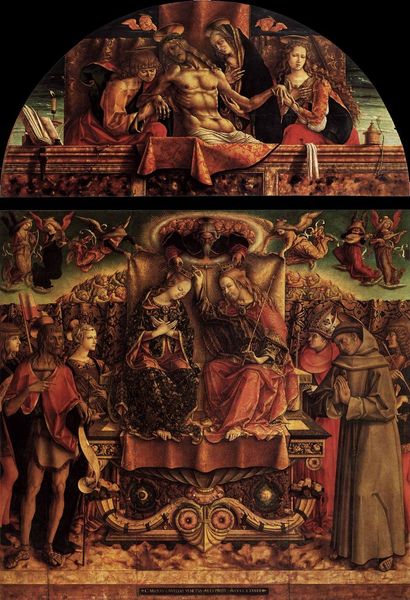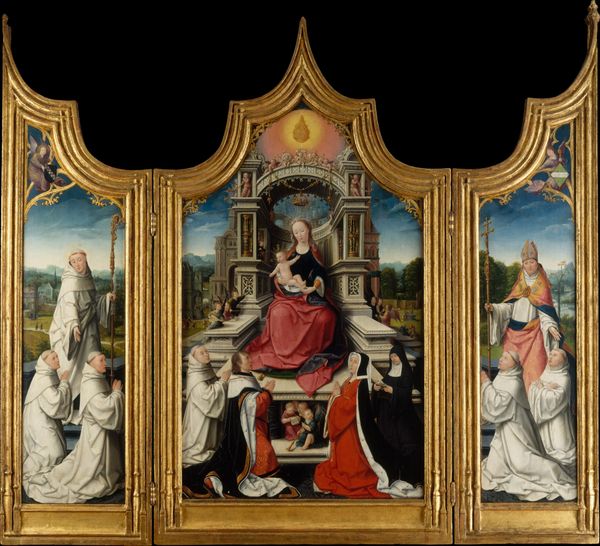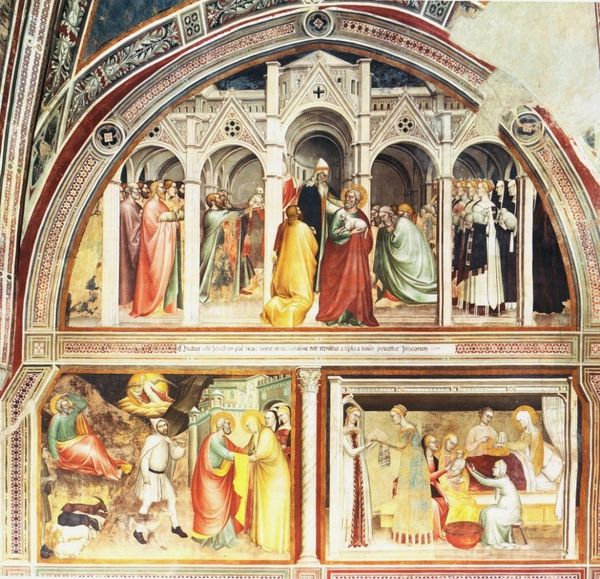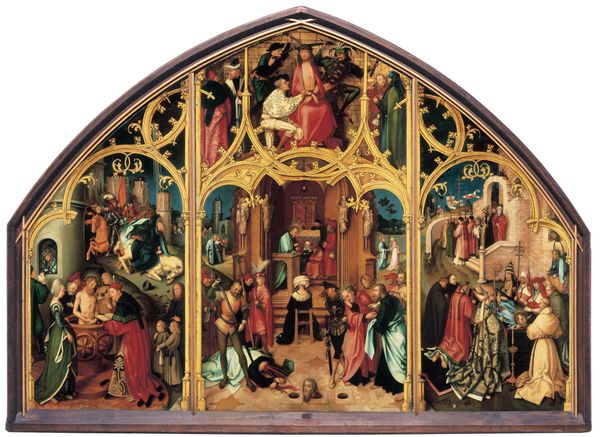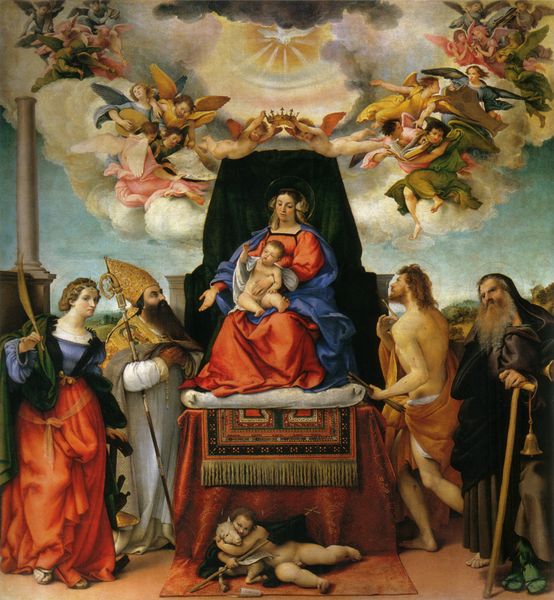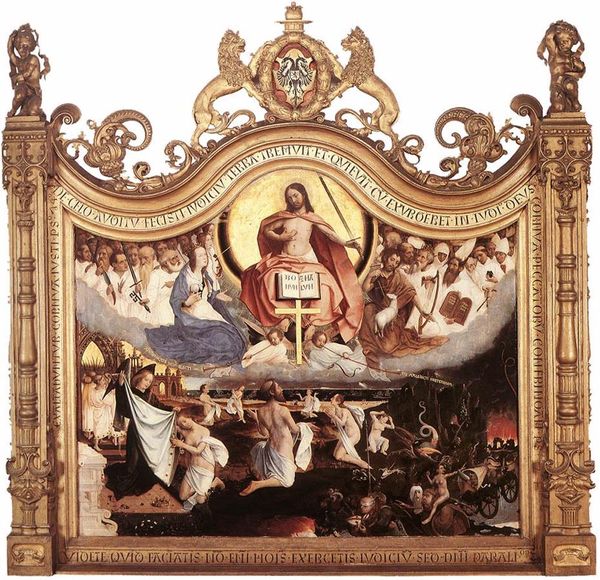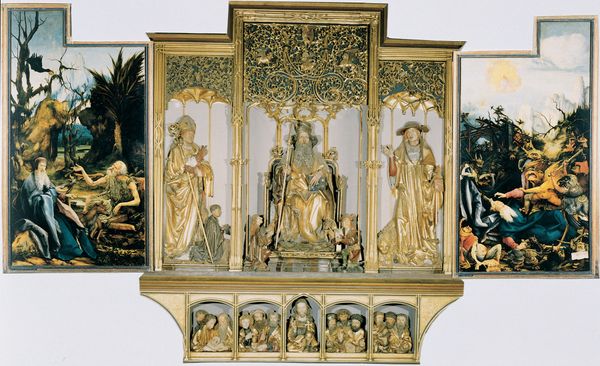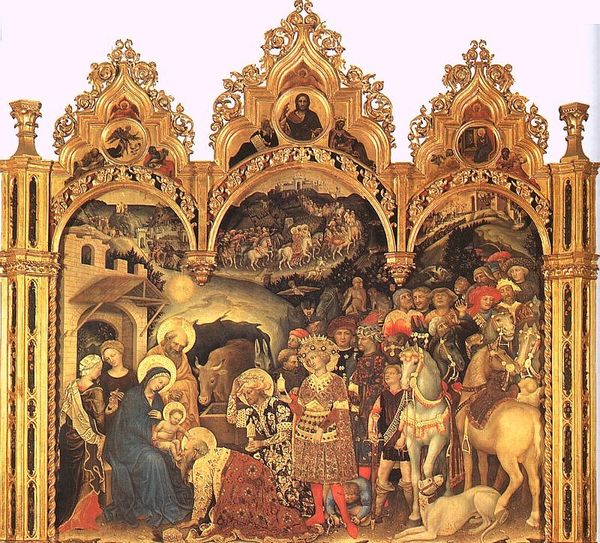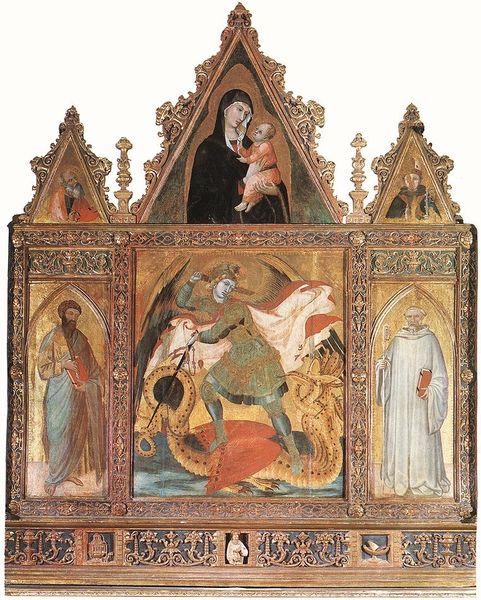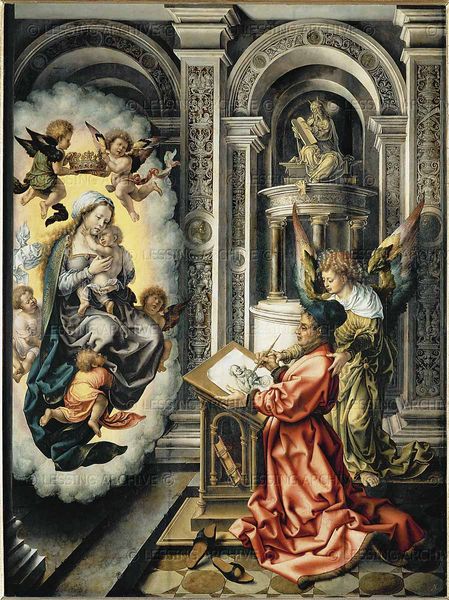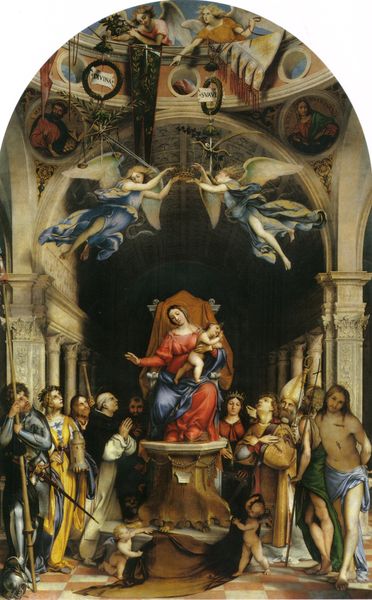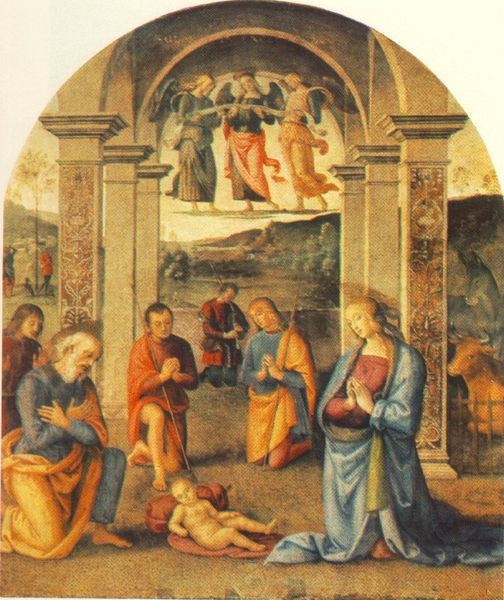
The Annunciation; Virgin and Child with Angels; The Resurrection (2nd face with open wings) 1515
0:00
0:00
matthiasgrunewald
Musée Unterlinden, Colmar, France
tempera, painting, oil-paint
#
allegory
#
tempera
#
painting
#
oil-paint
#
holy-places
#
figuration
#
11_renaissance
#
oil painting
#
jesus-christ
#
child
#
arch
#
christianity
#
history-painting
#
northern-renaissance
#
virgin-mary
#
angel
Copyright: Public domain
Editor: This is Matthias Grünewald’s “The Annunciation; Virgin and Child with Angels; The Resurrection” from around 1515, a large, multi-paneled altarpiece rendered in tempera and oil paint. It’s such an intense image; the color palette is stark, and the scenes feel incredibly dramatic. What stands out to you when you consider this piece? Curator: The materiality here is really compelling. Think about the immense labor involved in creating this object, the grinding of pigments, the application of layer upon layer of paint. It speaks volumes about the economic and social structures that enabled its production. But let's look closer - What impact did the use of oil paint, still relatively new at the time, have on the depiction of light and texture? Editor: I hadn’t thought about the oil paint specifically! The way the light seems to radiate, especially in the Resurrection panel, does seem unique. Curator: Exactly. Oil allowed for a luminous quality previously unattainable with tempera alone. It's not just about aesthetics, though. It's also about technological advancement, trade routes for pigment, the guild system that trained the artists – a whole network of material conditions is embedded in this work. Do you notice any evidence of that network in other details like the clothing or interior architecture? Editor: Well, the clothing of the figures on the left panel seems incredibly detailed. Does the detailed architecture behind the Madonna indicate the patron's affluence or class status through the use of imported goods or materials? Curator: Precisely! It’s about more than just faith. It’s a showcase of power and resources, articulated through carefully selected materials and crafted with skilled labor. We should remember the artist as both creative individual and producer of commodities within his society. Editor: So, viewing this as an artifact of its time, really shifts my perception. Curator: Absolutely! Considering the raw materials, the methods of production, and the social forces at play allows us a much richer and more complex appreciation of Grünewald's masterpiece.
Comments
No comments
Be the first to comment and join the conversation on the ultimate creative platform.

